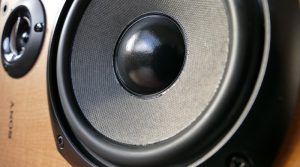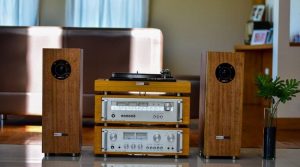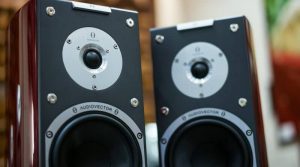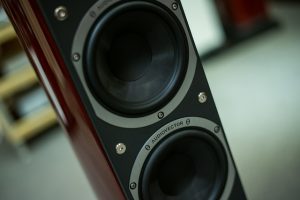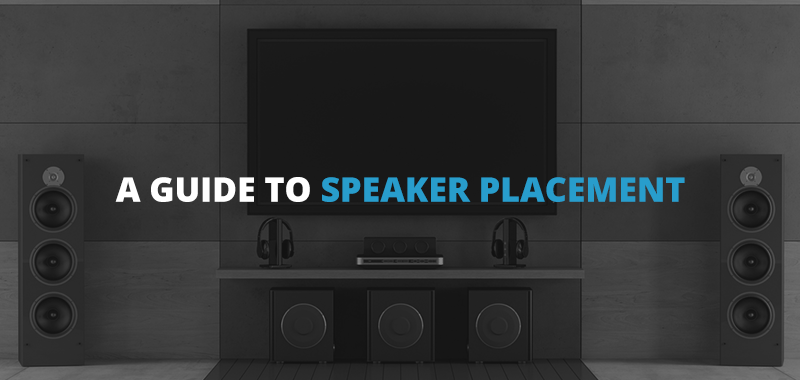
When you sit down to enjoy your favorite music, audio quality is everything. The better your sound system, the more often you’ll want to relax and listen to your favorite albums. But to get the best sound possible, there are specific areas where speakers should be placed to suit your space. Regardless of the brand or style of speakers you have, the right placement will improve the sound quality from where you’re sitting.
When it comes to achieving excellent sound, there are several factors you should consider when deciding where speakers should be placed. These factors include the size and shape of the room you’re placing the setup in, the distance between each speaker and the angle and height of each unit, among others. With a base understanding of the proper arrangement, you can create an audio experience that will impress your friends and guests. In this guide, we’ll discuss how to set up speakers for great sound.
Stereo vs. Surround
There are two primary types of speaker placements, and your setup will depend on which you choose. A stereo speaker placement, otherwise known as two-channel stereo speaker placement, involves a front left and front right unit. Since it consists of two speakers, symmetry is essential. The two-channel arrangement is optimal for music setups, such as listening to your favorite vinyls, but is also excellent for television audio. For small rooms and speakers, you might be able to get away with bookshelf speaker placement.
If you want a more immersive experience, go for surround sound speaker placement. These arrangements will typically involve anywhere from four to seven speakers, depending on the intensity you’re looking to achieve. For those who love the movie theater experience, a surround sound system is an excellent choice. You can also apply it to a music room, but it’s more typically a setup for watching films.
Room Size and Shape
The size and shape of the room you choose to set up in are both essential to how you should configure your speakers. If you have a standard, rectangular room, the best positioning involves placing the speakers facing the length of the room. They should sit in the first third of the room, with at least one meter of space between each speaker and the wall next to it.
The distance you should leave between the speaker and the wall depends on the room size and your preferences. Generally, the best placements are within one meter or over 2.2 meters in distance. For larger rooms, it’s best to pull the speakers further away from the wall. Also, if you place them too close, it can affect the sound of the bass.
However, not all rooms are created equally. While rectangular rooms are ideal for creating surround sound setups, those that are oddly shaped or laid out may pose a challenge. Windows, furniture placements, doorframes and corners can result in a space that isn’t conducive to the traditional speaker layouts. If you’re contending with an L-shaped area, open floor plan or another odd shape, you may want to consider using a 3.1 system, which includes the left, right and center channel speakers with an added subwoofer.
Distance Between Speakers
One of the most significant factors regarding your setup is the distance between each of your individual speakers. It may not seem like a huge deal compared to some of the other elements, but it can make a noticeable difference. The distance especially comes into play in surround sound setups, as the correct spacing will create the best stereo image and most immersive experience.
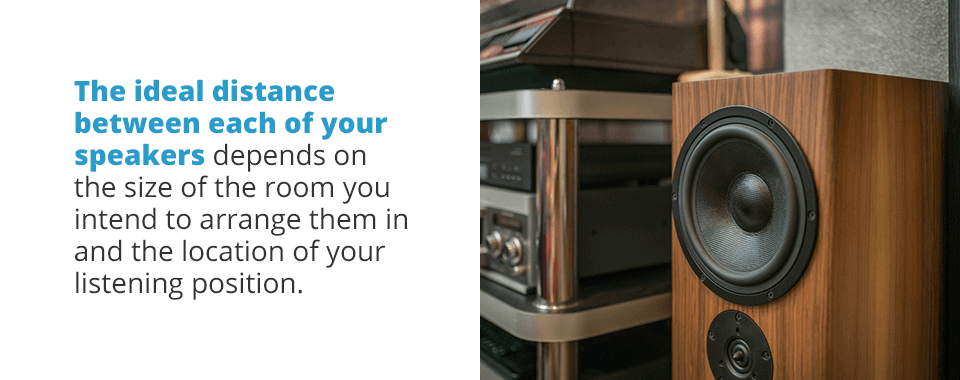
The ideal distance between each of your speakers depends on the size of the room you intend to arrange them in and the location of your listening position. If you’re not sure where to start, try placing the left and right speakers at least two meters apart from one another. Then, make sure your listening point is the same distance from either stand and in the center. It’s easiest to create an equilateral triangle of the two speakers and your seating.
Regardless of the type of speakers you have, this positioning will make any kind of sound impressive. Manufacturers typically create their audio products with the eventual room design in mind, and working with it will provide you with the best stereo image possible. Any manufacturer or dedicated seller can help you decide how to position your speakers perfectly.
Speaker Angles
The orientation of your speakers will affect your listening experience. When artists release their music, it’s typically in stereo, meaning it’s balanced between the two left and right speakers. In order to get the right audio balance, you should choose a central point and angle the speakers towards it. Whether it’s a couch, sitting space or a specific area of the room, it’ll be the best seat in the house. If you angle all your speakers inward, an angle called toe-in, it’ll provide the optimal balance and dynamic sound.
If you’re setting up a surround sound system, the arrangement will include the front left and right speakers, plus a center channel speaker and surround speakers. The left and right units stay in the same place as if you were leaving it at those two. The center channel speaker goes directly between those two. The surround speakers are a bit trickier, as their placement depends more on the type of system you have.
If you’re working with a 5.1 surround, the speakers should be to the left and right of wherever your seating is and aimed towards your ears. You can also place them slightly behind if necessary. For the best results, position them about one or two feet above where your ear level is when sitting. For a 7.1 surround system, they should still be to either side of your seating position, facing towards you. However, there are two additional speakers, which should sit behind your seating area, facing forward.
Speaker Height
Whether you have independent stands or plan to use other furniture pieces, the heights of your speakers matter. The optimal height sits at over 1.2 meters or matching up the tweeters with your head level. However, once you try them out, you can adjust them to suit your space and preferences better. Some people prefer placing the speakers slightly above ear level, and others prefer slightly below.
Isolated and In the Open
One of the base rules of setting up your speakers is that they should sit on a different surface than the turntable. If you place them together on the same shelf or cabinet, the vibrations of the speakers can interrupt the stylus on the player. Isolating them will ensure you have a better sound quality and that they’re well-spaced, regardless of the furniture layout. The best way to isolate the speakers is by using an independent stand for each unit, as they will provide you with top sound quality and make your system look more professional.
There are many different levels of quality when it comes to speaker stands, and they vary significantly in price. Your choice should depend on your budget range and the size and weight of the speakers you’re installing. Ultimately, the most important part of the equation is that the stands hold the speakers at the right height and in the correct position. Even if you have to temporarily use chairs or end tables, or some other form of furniture, the placement matters the most.
Besides isolating each speaker, you should also do your best to place them in open spaces. If they’re behind a couch, shelves or other furniture, the sound quality will suffer. For the best results, try to put them in areas where the sound path is uninterrupted.
Perfect Your Setup With Record Head
Whether you’re creating a surround sound experience for your home theater or dedicating a room to your vinyl collection, Record Head can help you create the perfect speaker arrangement for your needs. We offer new and used electronics in varying brands so you can find the perfect size and audio quality to fit your budget.
Our staff is knowledgeable about all the items we offer and can help you make educated decisions or direct you to the best options based on your space and intended use.
See what Milwaukee’s one-stop-shop for all things electronics has to offer — browse the products we have in stock or contact us for more information.




